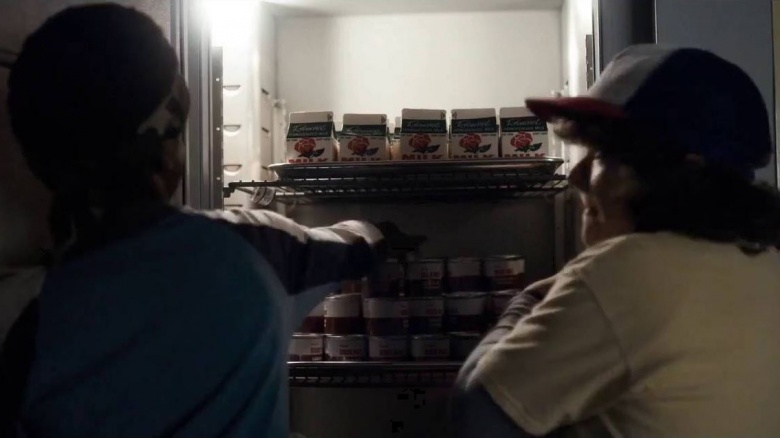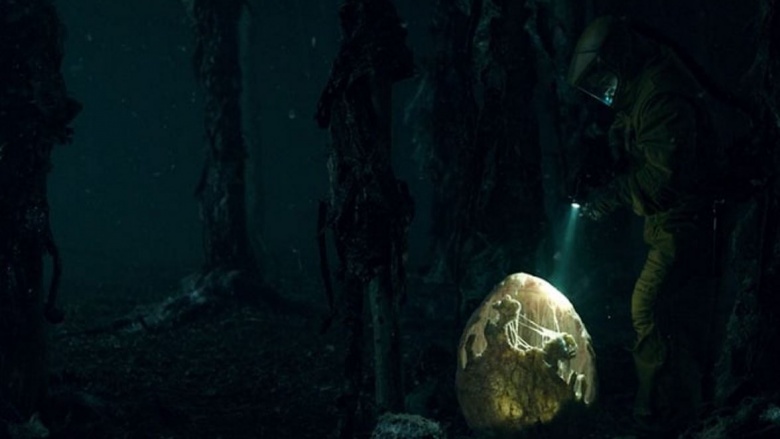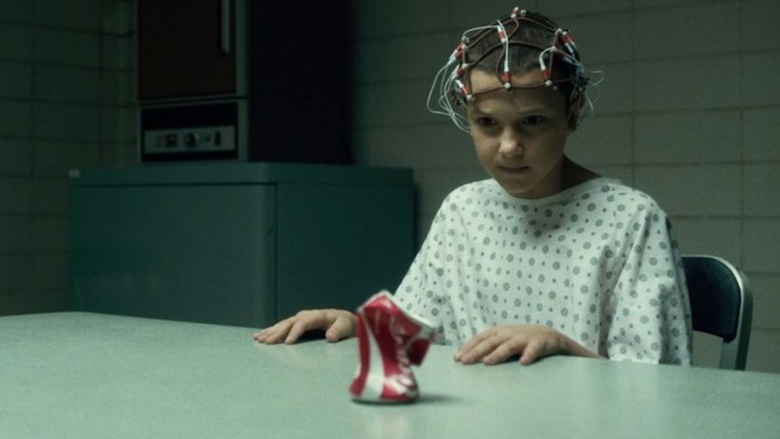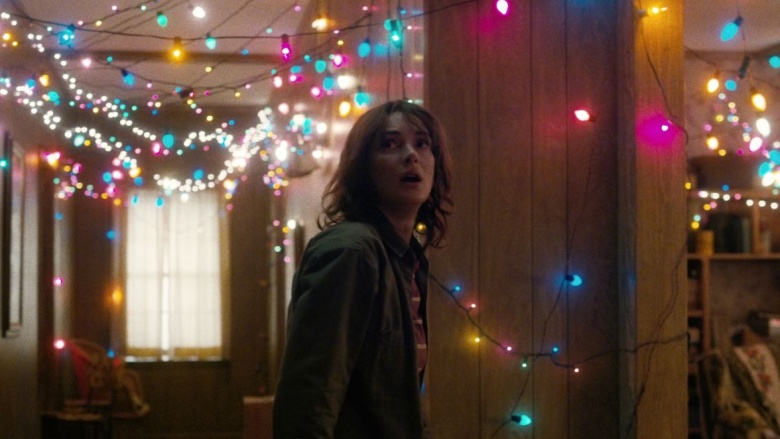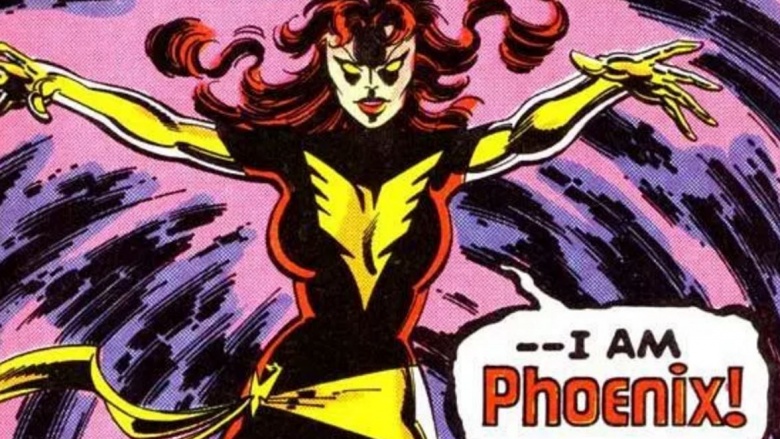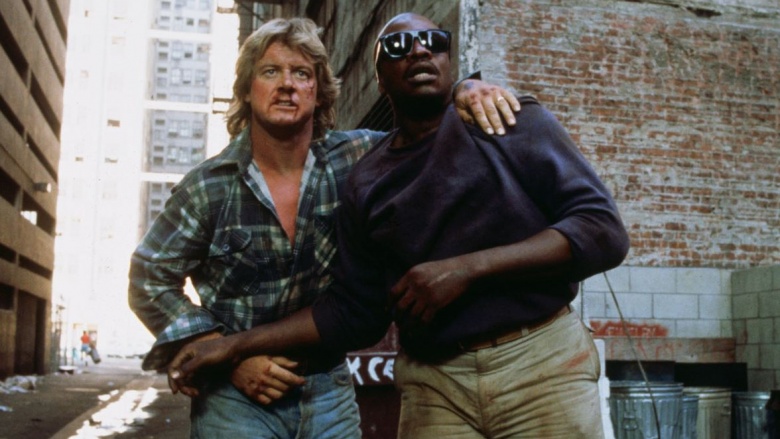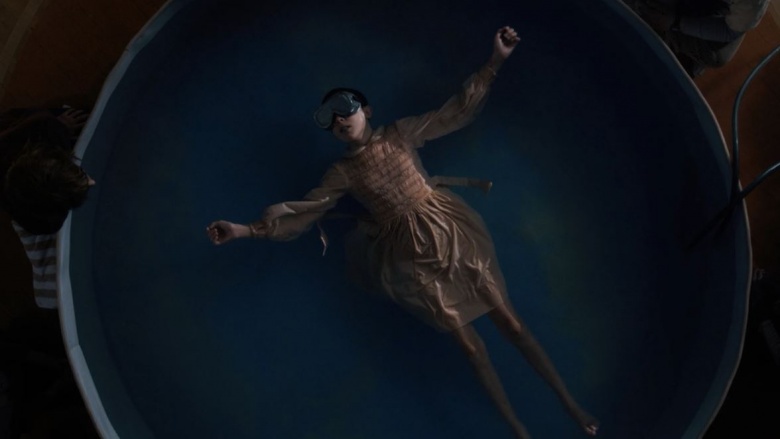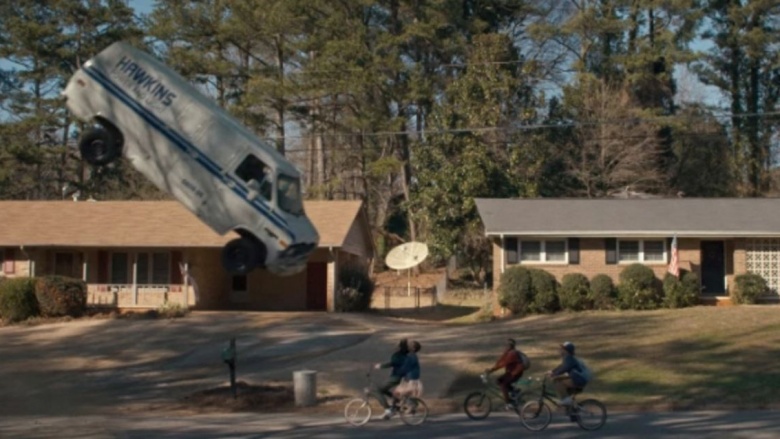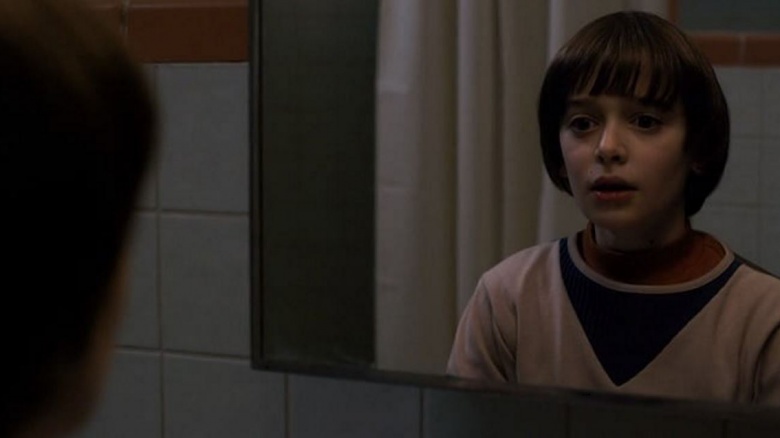Easter Eggs You Missed In Stranger Things Season One
Netflix's new series Stranger Things was an instant hit, combining the mystery and frights of early Stephen King, with the adventurous wonder of early Steven Spielberg. It's so deeply entrenched in 1970s and 1980s sci-fi/horror nostalgia that nearly every scene contains a wink and a nod to one of the show's many influences. But the story and characters are so engrossing, a lot of the Easter eggs can go entirely unnoticed. So let's go back into the Upside Down and track down all of the Easter eggs referencing movies, books, and shows you may have missed.
The Goonies
Stranger Things handles references unlike any other movie or TV show. Rather than making direct callbacks to memorable scenes or famous lines, it instead remixes the reference and fits it neatly into its world. A prime example is when, towards the end of the season, Dustin — the funny, loudmouthed member of the show's group of misfit kids — reenacts the scene from The Goonies where Chunk discovers a walk-in freezer filled with ice cream (and a dead body) in the Fratelli's basement. In Stranger Things, Dustin discovers a refrigerator filled with pudding cups in his school cafeteria. Even his delivery of the line, "Mike, I found the chocolate pudding!" is very similar to Chunk's joyful rattling off of ice cream flavors to his fellow Goonies.
The Alien franchise
Stranger Things is also filled with visual influences that may have come from the Alien franchise, particularly how the Demogorgon (the monster the kids name after a creature from their Dungeons & Dragons campaign) is shot and lit. The most direct reference, however, comes in the final episode of the season. That's when Nancy sees Jonathan being pinned to the ground by the Demogorgon and shouts ""Go to hell, you son of a b—!"—a reference to the classic scene in Aliens when Ripley, nuzzled in her power loader, fires off a similarly profane order at the alien Queen as it slowly approaches Newt.
In addition, when Joyce finally finds her son Will, after traveling to the Upside Down, she and Hopper have to pull a large serpent-like creature from his throat. This most unwanted of guests was impregnating him with its slug-like spawn, reminiscent of the face-huggers from the Alien franchise.
Stephen King's Firestarter
If Charlie McGee from the Stephen King novel Firestarter and Eleven from Stranger Things were to meet, they'd probably become fast friends. They'd bond over all their wacky stories about being experimented on by government agents, and how they're both little girls with psychic powers who were run through countless experiments and regularly tormented by malicious government scientists hoping to weaponize their power. Like Charlie's dad, Eleven gets nosebleeds after using her powers, and both girls were outfitted with electrodes on their heads to monitor their psychic activity. Also, both of them use their abilities to kill every bad guy in sight once they've had enough and decide to take the fight to their captors.
Close Encounters of the Third Kind and Poltergeist
In the Steven Spielberg classic Close Encounters of the Third Kind, a suburban father who grows ever-more-obsessed with extraterrestrials after a—you guessed it—close encounter sculpts the shape of a mountain (that will become important later in the story) out of mashed potatoes during a family dinner. He does it again later in the form of a massive pile of dirt, shrubs, and grass in the middle of the family living room. In Stranger Things, Joyce's obsession takes the form of hanging Christmas tree lights from the ceiling of her home, thinking this to be the best way she can communicate with Will, which is also reminiscent of how government scientists try to communicate with the aliens at the end of Close Encounters.
But there's another Spielberg-affiliated movie that also fits neatly into this category: Poltergeist. Not only does Joyce buy two tickets to watch Poltergeist with her son, Will, but later in the series, Joyce is able to pan-dimensionally communicate with her son through the walls of their home, just as the family in Poltergeist can.
A classic (and appropriate) X-Men storyline
In Stranger Things' first episode, Dustin challenges Will to a bike race where the loser has to give up a comic book. When the race ends, Will is the clear winner, and as he rides off, he shouts the exact issue he wants: X-Men #134. The events and revelations of that issue foreshadow the arrival of a character in the world of Stranger Things, that will change the lives of all the main characters. See, that issue of X-Men is the one where Jean Gray, the X-Men's powerful psychic, becomes Dark Phoenix, a cosmic being with dangerous and unstable psychic powers. That one small reference foretold the arrival of Eleven, a girl with some mighty powerful psychic abilities of her own.
They Live
When Steve Harrington and Jonathan get into a back-alley brawl over the graffiti shaming of Nancy Wheeler, they're not just releasing their pent-up frustrations on each other's faces with their fists. They're also paying homage to one of the all-time great movie fight scenes: the iconic battle between titans "Rowdy" Roddy Piper and Keith David in the 1989 classic They Live. Just two guys slugging away at each other for an amount of time that seems almost comical — nothing strange about that.
Altered States
If you're a fan of the J.J. Abrams-produced sci-fi show Fringe, then you're already familiar with the idea of sensory deprivation tanks, like the ones that show up throughout the latter half of Stranger Things' first season. But what you might not know is that, with them, both Fringe and Stranger Things are referencing 1980's cult science-fiction classic Altered States. Sensory deprivation tanks take a prominent role in that film, as characters use them (and plenty of powerful drugs, like LSD) to expand their minds and tap into areas of existence and consciousness that no one could have ever imagined. You know, like how Eleven uses sensory deprivation tanks to amplify her psychic powers, so she can make contact with The Upside Down.
So many E.T. references
There's the scene where Mike tries to hide Eleven in his room, the same way Elliott tries to hide E.T. from his mom. There's also the scene where the boys try to disguise Eleven in a girly dress and a blonde wig, the same way Elliott tries to disguise E.T. And, of course, there's the biggest reference of them all: as the gang tries to outrun government agents while riding their bicycles, Eleven uses her powers to flip an oncoming van of government goons, allowing them to make their escape. In E.T., Elliott and crew soar over a police blockade as E.T. levitates the gang to safety, in one of the most iconic moments in cinema history.
Twin Peaks
In the disturbing final scene of the season, Will excuses himself from dinner to go to the bathroom, where he vomits up a creepy otherworldly slug. His reality flickers away and he briefly enters the Upside Down — the scary alternate world he was trapped in all season — as he stares at himself in the mirror above the bathroom sink. The implication here is that the ordeal may be over, but he's brought a little bit of it back with him. This is a direct reference to the final shot of David Lynch's bizarre TV masterpiece Twin Peaks, when Agent Dale Cooper smashes his head into a bathroom mirror and cackles maniacally. The horror and trauma of Laura Palmer's death, and his investigation into it, had poisoned his sanity.

